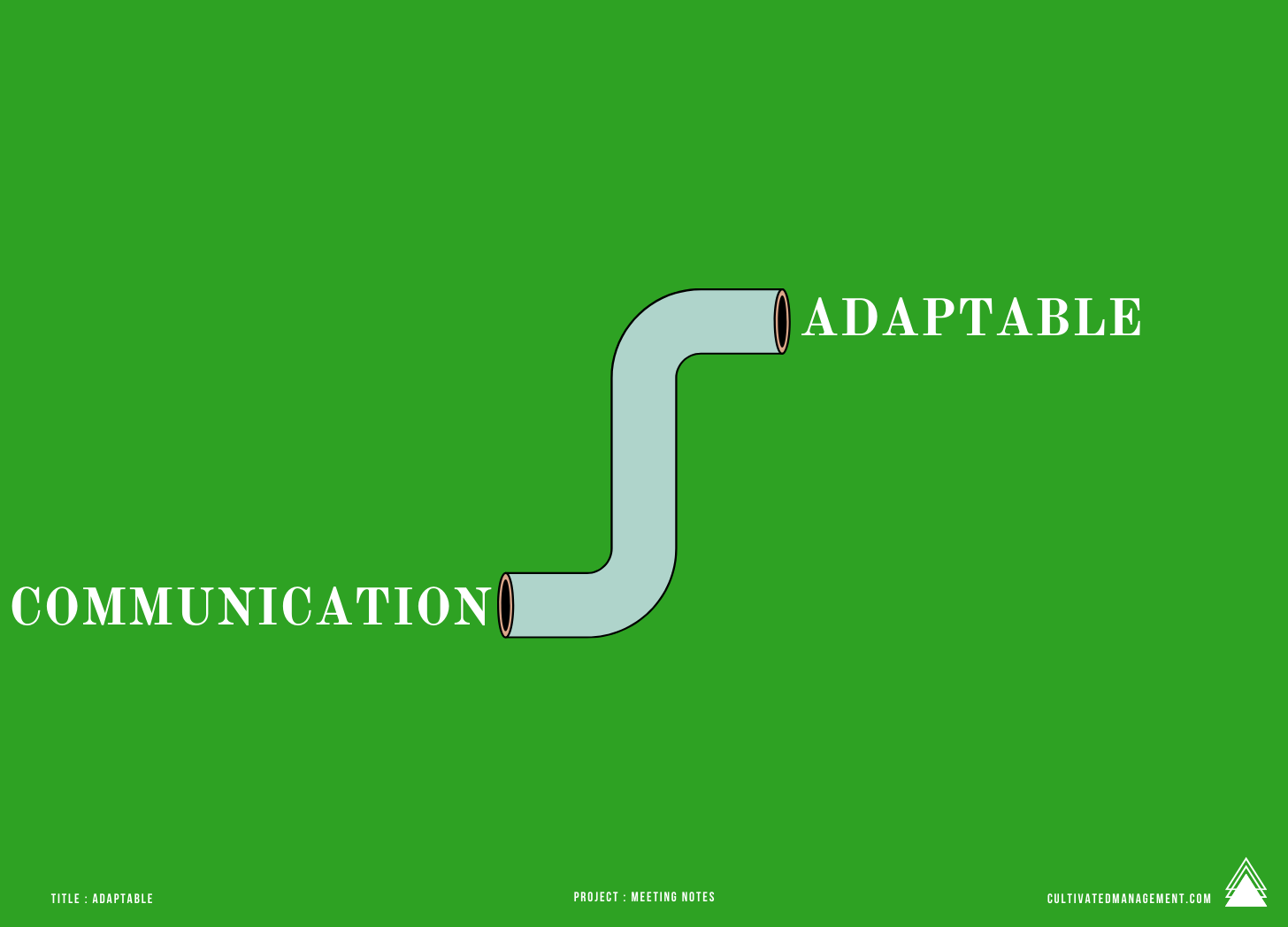
Being able to adapt our communication approach depending on purpose, audience and context is an essential skill in work (and life). This is at the heart of my flagship Workshop and online course on communication skills.
The clearer we are on our purpose, audience and context, the better equipped we are to modify and adapt our communication.
Being able to read a room, communicate with different people, use different mediums and change our hard and soft styles, will allow you to be more flexible and adaptable in work.
We've all met these people who are like a vending machine. They require certain inputs to get certain responses. We've met people who cannot adapt from their natural preferences, no matter who they are communicating to.
Then, we've also met those people who have presence, can talk to anyone and have this uncanny ability to move people into action.
This is not from possessing a magical gift, it is from possessing the ability to adapt their communication skills and behaviours to achieve their purpose, with their audience, and in a particular context.
The Warm and Fluffy test
To bring this idea to life I will use an example from my own career building and growing effective teams.
I always put communication skills as the highest skill and behaviour I am looking for in my team.
There is little point in being an expert in something if you cannot work with other people, sell your ideas, communicate with clarity and align with others in the business.
Nobody is bigger than the team.
This is why I call effective communication a super power in the world of work.
As such, I would always have a series of communication based questions in the interview - one of those many questions is the warm and fluffy test.
It's hardly scientific - far from it. It's not rigorous either. But it can be insightful.

The question is based around a line drawn on the whiteboard, or digital tool, representing a hypothetical scale of communication.
- At one end is hard communication; direct, specific, dictatorship, tell, do as I say.
- At the other end is extremely soft communication; no tell, do what you want, avoid all conflict, warm and fluffy
In other words, the scale, which I call the warm and fluffy test, represents a scale from Command and Control to Warm and Fluffy - in terms of communication.
One side is "telling people what to do" and the other is "never be direct"
I told you it wasn't scientific.
Where are you on the scale?
I ask candidates to mark on the scale where their communication style and approach is.
Are they more direct and specific? Or are they warm and fluffy?

It's amazing to see how honest many people are. I expected people to put themselves in the middle (the safe answer) but people were remarkably honest.
We would discuss why they marked where they did - and how that is reflected in their work - always with examples from their experience.
The best candidates though, always answered the same way.
They marked where their “natural preferences” were but explained that they could move up and down the scale when they needed to.

Top prize. It’s really a micro-non-scientific-test of adaptable communication skills.
Someone’s ability to flex up and down the scale, between hard and soft communication, depending on the Purpose, Audience and Context, is a good sign that they understand how important relating and communicating to other people is.
Of course, in an interview I’ll never have an enough time (or data) to ascertain whether that is just a good interview technique or true, but I would always ask them to bring to life their answer through examples - and then build on them.
Our natural communication style, I use DISC heavily here, is rarely the most appropriate in many communication situations in the workplace.
We need to learn how to flex our styles. We need to know when to be harder with our communication or softer, or listen more, or direct, or lead, or modify our body language.
We do this by reading other people, listening, getting to know other people and reading the context of the situation – as well as developing the behaviours needed to shift communication styles.
Effective communicators understand this and flex accordingly. This warm and fluffy scale represents that idea.
The best people to work with have empathy, can understand other people and have adaptable communication styles to suit the context and the person.
How to adapt
The essential first step to being able to adapt your communication style is to become completely aware of what your natural style and approach is.
Once we understand our own style, preferences, strengths and weaknesses, we can understand how to respond to situations, where to focus our learning and how to develop a natural ability to flex our styles.
I use an inductive learning style in my in-person and online communication workshop, which means we start with a guiding principle - that all communication has a Purpose, an Audience and a Context, and build out how to use this core principle in different situations.
This founding principle allows us to learn how to adapt our communication style and approach to suit the Purpose, Audience and Context. The more we try, practice and build outward from this principle, the more we make communication flexibility look natural.
It takes time. It takes practice. Developing effective communication skills is a never-ending journey of growth. We will get some things right and some things wrong.
To learn how to communicate we must also know how to judge, analyse and reflect on our own growth and behaviours too. This is not as easy at it sounds.
It is mostly internal work on our own style and tendencies to react in certain contexts. Then it is learning how to develop better clarity, language skills, body language control and other non-verbal communication (tone, pitch, style etc).
If we are merely static in our approach to all communication interactions, we’ll find we can’t work with certain groups of people, or can’t control a situation that needs some control, or we lead with fear, or create a culture that spirals out of control, or simply find everything and everyone utterly overwhelming.
Adaptable communication allows us to move and sway with those we are communicating with, increasing our chances of resonating greatly.
The best people to work with are those who know when to move on the scale. They spend time building great relationships and can run that line between being effective and liked all day long. They know when to be softer and open, and when to be more direct and specific - sometimes even within the same conversation!
Effective communicators know how to do this. They flex when they need to. They coach other people in how to do this. If they are a manager or leader, they recruit people who know how to communicate.

